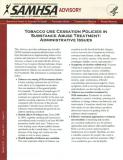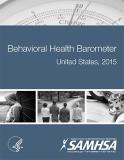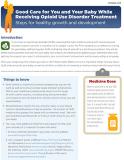
This resource provides substance use treatment program administrators with information to implement tobacco-free policies and practices in treatment settings. It discusses challenges and strategies for developing clinical guidelines for treating tobacco dependence.
Units per Product
Download
Tobacco Use Cessation Policies in Substance Abuse Treatment: Administrative Issues
File Type: PDF
File Size: 487 KB







